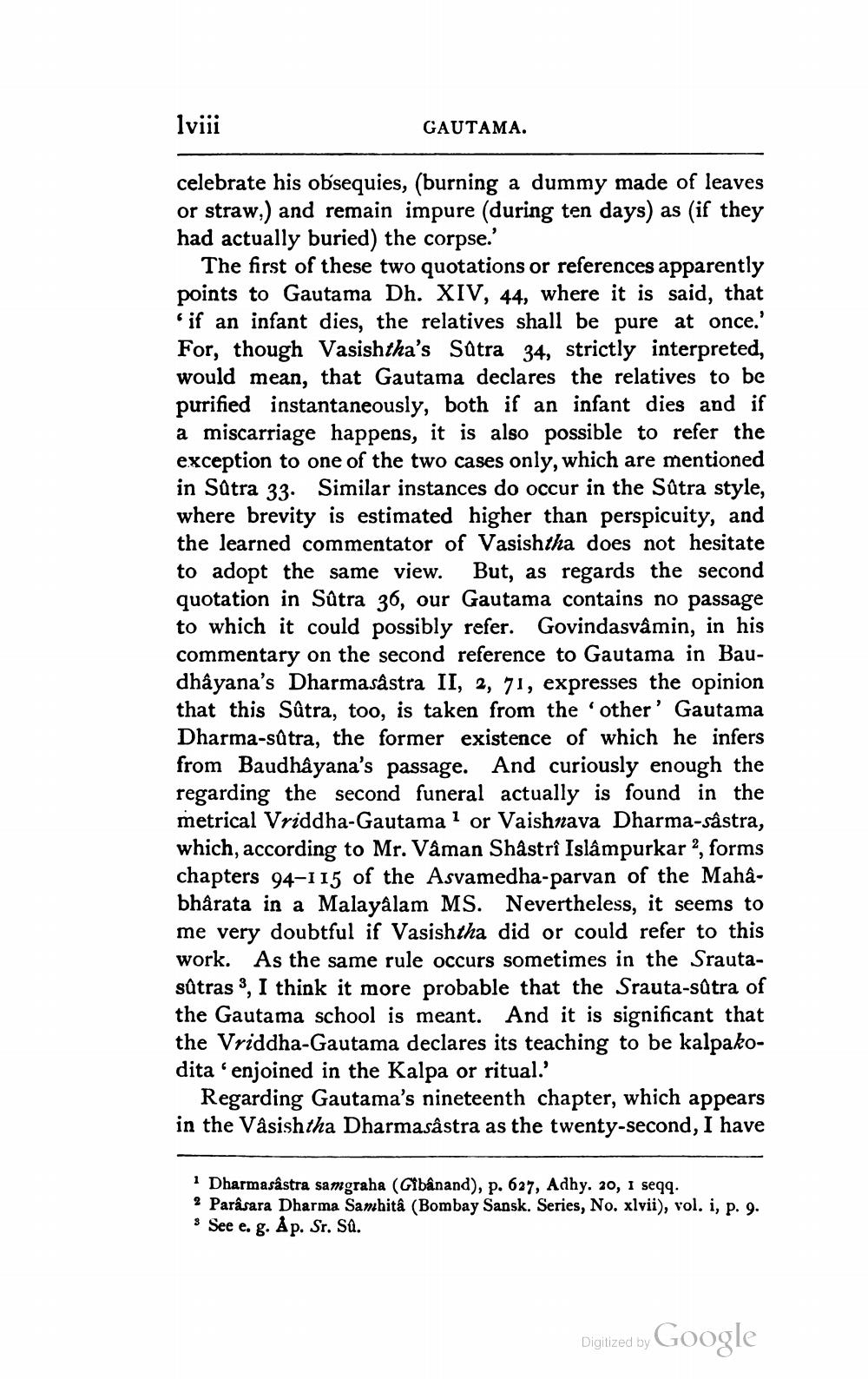________________
lviii
GAUTAMA.
celebrate his obsequies, (burning a dummy made of leaves or straw,) and remain impure (during ten days) as (if they had actually buried) the corpse.'
The first of these two quotations or references apparently points to Gautama Dh. XIV, 44, where it is said, that "if an infant dies, the relatives shall be pure at once.' For, though Vasishtha's Sûtra 34, strictly interpreted, would mean, that Gautama declares the relatives to be purified instantaneously, both if an infant dies and if a miscarriage happens, it is also possible to refer the exception to one of the two cases only, which are mentioned in Sutra 33. Similar instances do occur in the Sûtra style, where brevity is estimated higher than perspicuity, and the learned commentator of Vasishtha does not hesitate to adopt the same view. But, as regards the second quotation in Sûtra 36, our Gautama contains no passage to which it could possibly refer. Govindasvâmin, in his commentary on the second reference to Gautama in Baudhâyana's Dharmasâstra II, 2, 71, expresses the opinion that this Sûtra, too, is taken from the 'other' Gautama Dharma-sûtra, the former existence of which he infers from Baudhâyana's passage. And curiously enough the regarding the second funeral actually is found in the metrical Vriddha-Gautama 1 or Vaishnava Dharma-sâstra, which, according to Mr. Vâman Shâstrî Islâmpurkar 2, forms chapters 94-115 of the Asvamedha-parvan of the Mahâbhârata in a Malayalam MS. Nevertheless, it seems to me very doubtful if Vasishtha did or could refer to this work. As the same rule occurs sometimes in the Srautasûtras 3, I think it more probable that the Srauta-sûtra of the Gautama school is meant. And it is significant that the Vriddha-Gautama declares its teaching to be kalpakodita enjoined in the Kalpa or ritual.'
6
Regarding Gautama's nineteenth chapter, which appears in the Vâsishtha Dharmasâstra as the twenty-second, I have
1 Dharmasâstra samgraha (Gîbânand), p. 627, Adhy. 20, 1 seqq.
2 Parâsara Dharma Samhitâ (Bombay Sansk. Series, No. xlvii), vol. i, p. 9. See e. g. Ap. Sr. Sû.
Digitized by
Google




